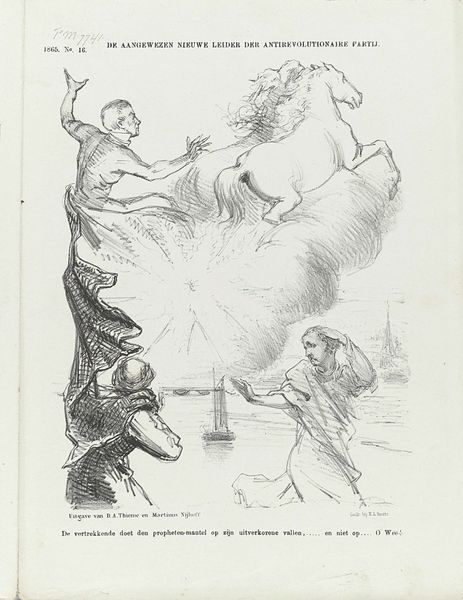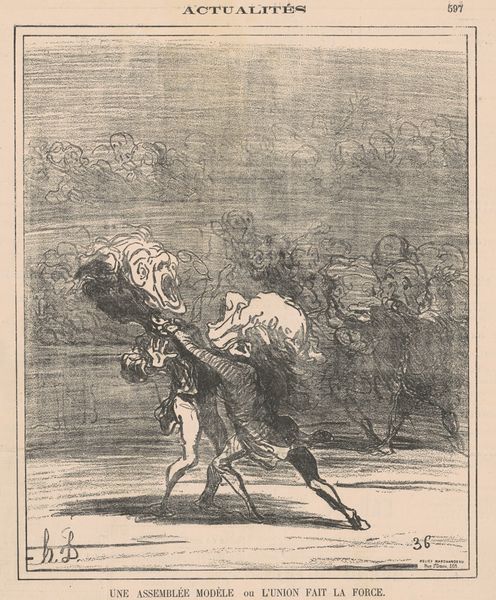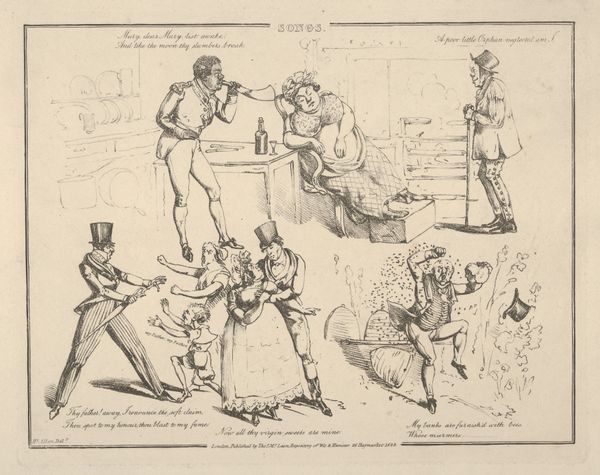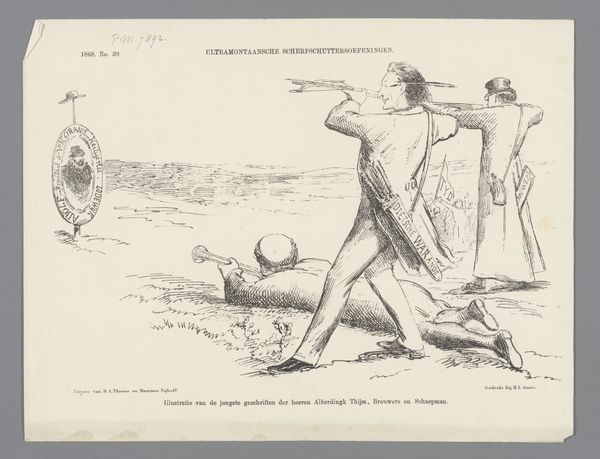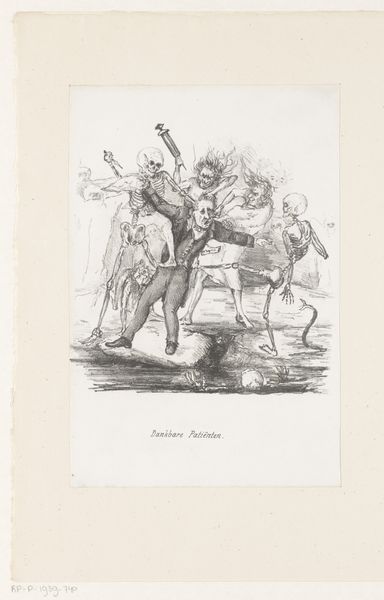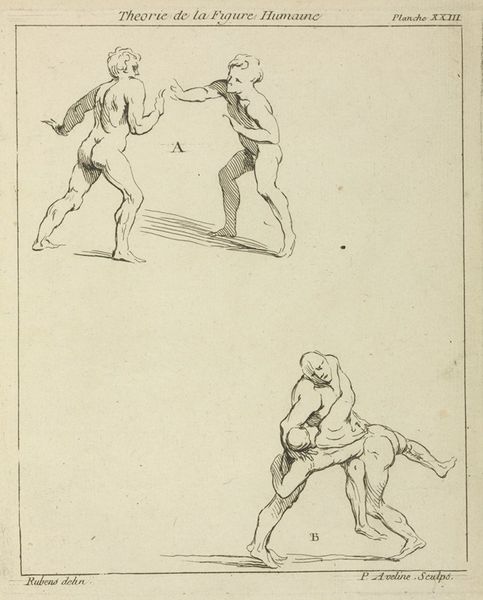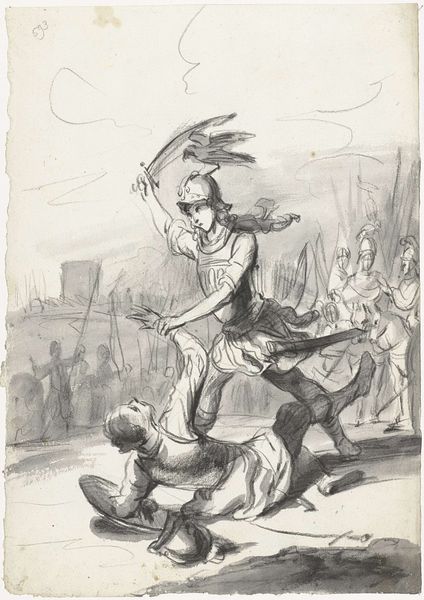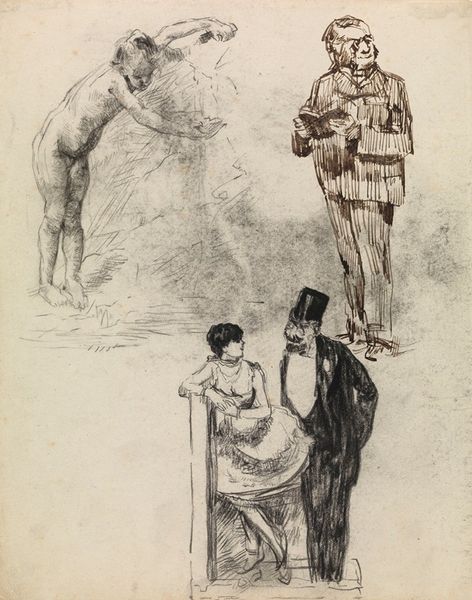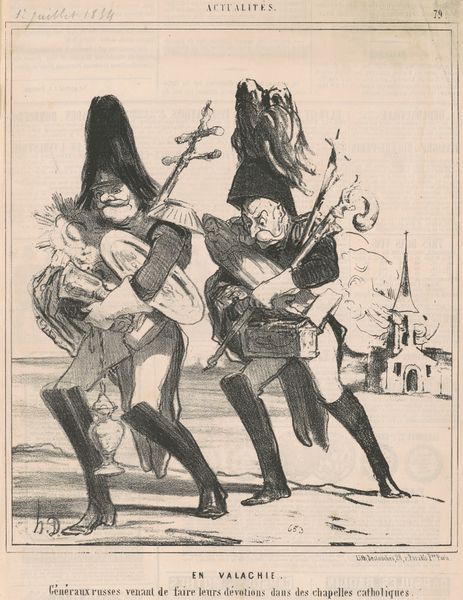
drawing, lithograph, print, pen, engraving
#
portrait
#
drawing
#
lithograph
# print
#
caricature
#
old engraving style
#
pen-ink sketch
#
pen
#
genre-painting
#
engraving
Dimensions: height 275 mm, width 215 mm
Copyright: Rijks Museum: Open Domain
Curator: Immediately striking. It possesses a raw, almost unfinished quality, owing to its graphic economy and open composition. Editor: I'm ready to jump right into Johan Michaël Schmidt Crans' political cartoon, titled "Spotprent op de Liberalen, 1861", created in 1861. It appears to be a lithograph drawing with pen and engraving. Crans targets Dutch Liberals with biting wit. Curator: Yes, the satire hinges, aesthetically, on this balance of detail and abstraction. The solidity of the performers against the ethereal quality of the observing crowd suggests… alienation, perhaps? Editor: Precisely! We must consider the Liberal party's influence during this period. The cartoon presents them as circus performers engaged in an absurd spectacle, specifically implicating their adherence to rigid doctrines - see the subtitle "Great tour with the yoke of principles." This would greatly resonate with people of the time, especially considering the socio-political climate. Curator: Intriguing! Tell me more about these characters as pictorial signs. Notice how each figure inhabits their zone. The figure on stilts—perched precariously!—becomes an emblem of ideological overreach. Is the prone figure below a comment on political subservience? Editor: That's certainly a likely interpretation, and in the 1860s the artist criticizes liberal policies of the time by portraying its actors as circus-like figures, literally forming the phrase in Dutch; the yoke of principles; hinting at its coercive effects on society through visual and textual association. He underscores how individual liberties are impacted in favour of national doctrines. Curator: How remarkable the artist achieves such sharp critical effect via deceptively casual, nearly journalistic sketch. What seems spontaneously rendered carries concentrated intention and historical commentary. Editor: Absolutely. Consider this work in its time; a powerful instrument to persuade public opinion. Curator: Thinking about how Crans so incisively combines compositional elements with allegorical figuration allows greater appreciation for his cleverness as both draftsman and social critic. Editor: Analyzing political cartoons can open valuable historical, as well as theoretical inroads in order to perceive society through the lenses of contemporary artists.
Comments
No comments
Be the first to comment and join the conversation on the ultimate creative platform.
